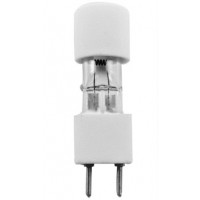Medical Bulbs
Medical bulbs are specialized lamps designed to meet the rigorous requirements of healthcare applications, providing the intense, color-accurate illumination that medical professionals need for examinations, procedures, surgeries, and diagnostics. These bulbs must deliver specific performance characteristics – precise color rendering so tissue and symptoms appear accurately, adequate intensity for detailed visualization, appropriate spectral output for various medical procedures, and absolute reliability because lighting failure during medical procedures creates serious complications. Medical lighting isn't general illumination – it's precision instrumentation.
Examination and procedure lighting requires perfect or near-perfect color rendering (CRI 95-100) because medical diagnosis often depends on accurately perceiving tissue color, skin conditions, and subtle variations that indicate health status or pathology. A 90 CRI bulb that's perfectly adequate for office lighting can cause color distortion that affects medical diagnosis. Medical halogen bulbs achieve CRI 100 with color temperature typically around 3000-3400K, providing white light that renders tissue tones accurately without the yellow cast of lower color temperatures or the harsh blue-white of very high temperatures.
Surgical lighting demands even more stringent requirements: extremely high intensity (20,000-160,000 lux at the surgical field), shadow-free illumination achieved through multiple light sources and sophisticated reflector systems, minimal heat radiation to avoid heating the surgical field and causing discomfort, and color temperature that renders blood and tissue accurately. Surgical suite lamps use specialized bulbs rated for these conditions – often high-wattage tungsten halogen lamps (35W-150W) designed for enclosed surgical light fixtures where heat management is critical.
Dental lighting requires focused illumination at the patient's mouth, with color rendering adequate for matching restorative materials to natural tooth color and identifying oral health issues. Dental unit lights and headlamps use specialized bulbs, often halogen capsules providing intense white light in compact form factors. The bulb positioning in dental lights is critical for eliminating shadows and providing the visualization dentists need for precision work. LED has made significant inroads in dental lighting due to cool operation and long life, but halogen remains common in existing equipment.
Examination room lighting and task lights use various bulb types depending on the specific fixture and application. Some examination lights use halogen bulbs for excellent color rendering, others use compact fluorescent for efficiency and cool operation, and increasingly LED for its combination of efficiency, longevity, and improving color quality. The selection depends on whether the application demands maximum color accuracy (halogen) or prioritizes efficiency and cool operation (LED/CFL) with adequate color rendering.
Phototherapy and specialized medical lighting uses bulbs with specific spectral outputs for therapeutic purposes. Blue light phototherapy for neonatal jaundice, UV lamps for skin conditions, red light therapy, and various other therapeutic lighting applications require bulbs producing precise wavelengths at specific intensities. These specialized medical lamps follow strict protocols regarding output characteristics, treatment times, and safety distances. Using incorrect bulbs compromises treatment effectiveness and potentially creates safety issues.
Replacement scheduling in medical settings often follows preventive maintenance protocols rather than waiting for failure. Surgical lights may have bulbs replaced on a schedule well before rated life expires because the consequences of failure during surgery are unacceptable. The cost of premium medical-grade bulbs is secondary to ensuring reliable, safe operation. Many facilities maintain inventory of critical medical bulbs to ensure immediate availability for replacements.
LED has gradually entered medical lighting as LED color quality has improved and concerns about spectral output characteristics have been addressed through research and standards development. Modern LED surgical lights and examination lights can match or exceed halogen performance in color rendering while providing dramatic advantages in energy efficiency, heat reduction, and longevity. However, the medical lighting industry moves cautiously – proven performance and regulatory compliance take priority over technological trends.
Common Applications: Surgical suite lights, examination lights, dental lights, procedure lights, specialty diagnostic equipment, phototherapy lamps, endoscopy illumination, microscope illumination
Key Requirements: Excellent color rendering (CRI 95-100 for critical applications), appropriate color temperature (typically 3000-4000K), high intensity, reliable operation, specific spectral characteristics for specialized applications
Common Types: Halogen capsules (various wattages), specialized surgical lamps, fiber optic illumination sources, halogen reflector bulbs, LED modules (increasingly), specialty UV and phototherapy lamps
B1-010-28
24V, 50W, G8 Pin Base, Medical Lamp, Operating Room Lamp. Surgical Illumination. Microscopes..
Contact for Price

